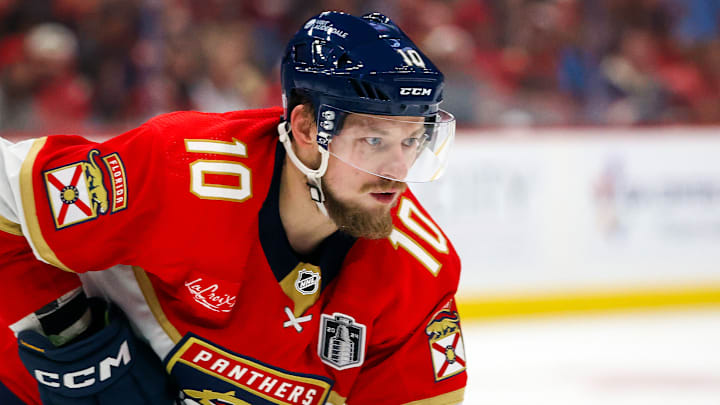A tougher bottom-six to play against.
You can argue that the Detroit Red Wings got weaker as a whole on the backend by losing Shayne Gostisbehere to free agency and oddly trading Jake Walman to San Jose for virtually a bag of pucks. We do have Simon Edvinsson and Albert Johansson to look forward to, I suppose. That said, Yzerman tried to round out the bottom of his group of forwards with more complete players that are tougher to play against, forgoing plenty of scoring upside.
Detroit traded Robby Fabbri and let Daniel Sprong walk in free agency. The two depth-scoring forwards accounted for 18 goals each last season. The pair have been replaced with Tyler Motte and TBD. The TBD is likely Jonatan Berggren and/or Marco Kasper. Berggren doesn't fit the mold of someone who is 'tough to play against,' but he can score 15-20 goals; the Red Wings need to find a way to get the best out of him. Berggren recorded 24 goals last season, with Grand Rapids often appearing like the Griffin's most dangerous scoring threat. The 23-year-old is due to break out, and hopefully, it's in Detroit next season. Kasper has everything you want in a forward. He's a reliable 200-foot player; he has tremendous vision and playmaking ability but sometimes lacks finish. There is also an element of grease to Kasper's game and that's something Detroit needed to add.
Motte, 29, doesn't bring much offensive ability to the table, but he can hang his hat on being a glue guy and a reliable penalty killer. He notched six goals and nine points last season in Tampa Bay. Although he won't generate many scoring opportunities, he won't be a liability in the defensive zone, think Kirk Maltby.
Detroit's bottom six projects as Michael Rasmussen, Andrew Copp, Christian Fischer, Tyler Motte, Joe Veleno, and Jonatan Berggren/Marco Kasper.
